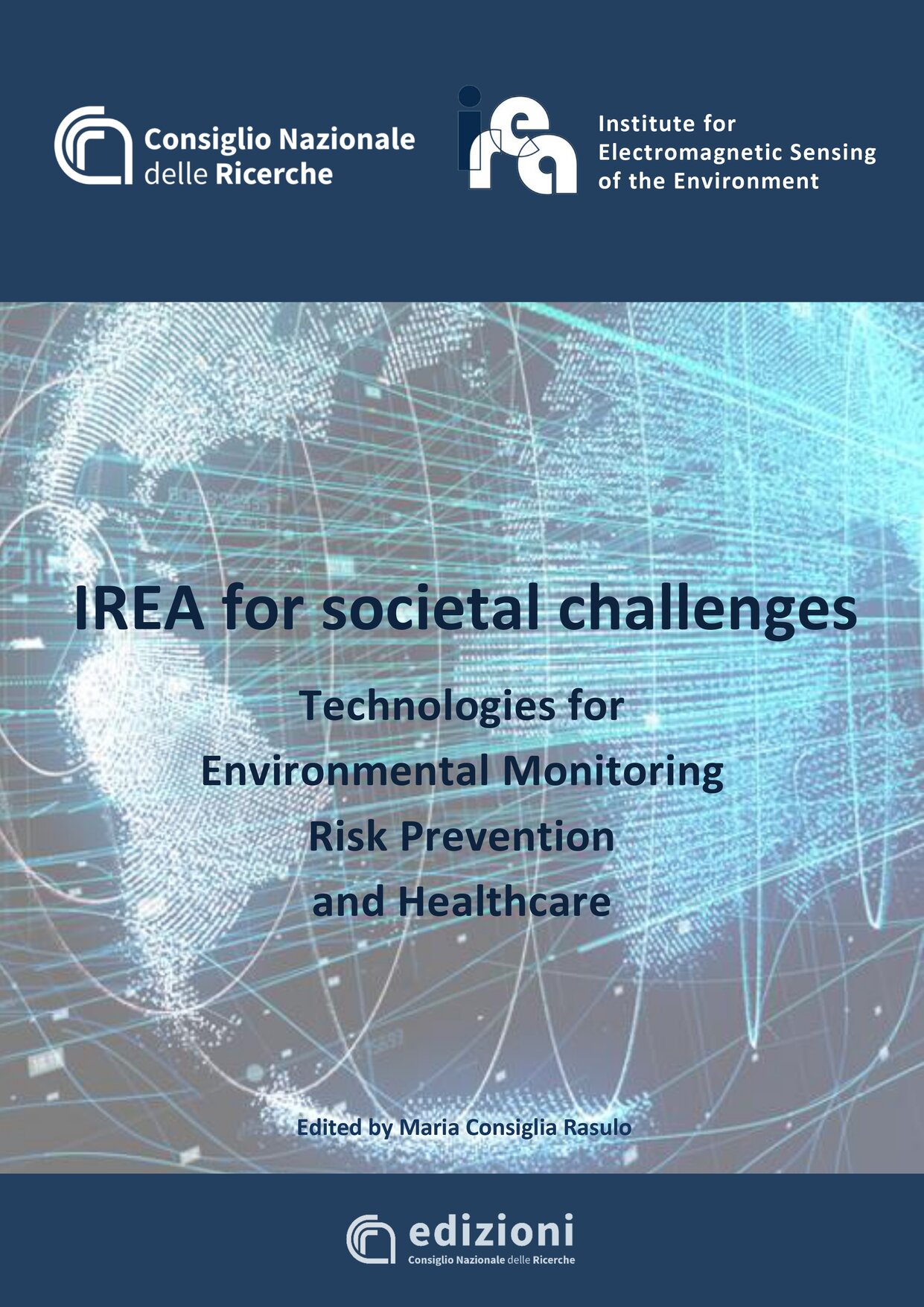 |
| Paolo Villa | |
| Paolo | |
| Villa | |
| ... | |
| +39 02-23699 292 | |
| Researcher |
Activity
My research focus on using multitemporal Earth Observation (EO) data (multi-hyperspectral, from satellite and aerial platforms) for the analysis of anthropic impact on the environment, from the local to regional scale, by integrating multi-source data (optical and SAR). |
Curriculum
Paolo Villa got his Engineer’s degree (laurea) in Environmental Engineering, in 2004 at Polytechnic of Milan, where he got his PhD in Geodesy and Geomatics, in 2008. After a collaboration with Hydraulics, Infrastructures, Environment and Surveying Engineering (DIIAR) Department of Polytechnic of Milan, since 2006 he has worked at the National Research Council (CNR), first as research fellow of the Institute for Electromagnetic Sensing of the Environment (IREA), in Milan, and then as a researcher of Institute of Information Science and Technologies (ISTI), in Pisa, and finally back again at IREA, Milan. In 2013, he was visiting scientist at Nanjing Institute of Geography and Limnology, Chinese Academy of Sciences (NIGLAS), on the topic "Integrated Landscape-Water Quality Monitoring through Remote Sensing". His research themes range from environmental applications of image processing and remote sensing techniques (for geology, urban mapping, natural hazards, wetland vegetation and crops monitoring), with specific reference to testing and advancing integration of optical and SAR data for thematic applications, to Spatial Data Infrastructures and geodata harmonisation. |
Scientific production
International Journals (ISI) P. Villa, Stroppiana, D., Fontanelli, G., Azar, R., and Brivio, P. A. (2015). In-Season Mapping of Crop Type with Optical and X-Band SAR Data: A Classification Tree Approach Using Synoptic Seasonal Features. Remote Sensing, 7(10), 12859-12886. Hestir E.L., Brando V.E., Bresciani M., Giardino C., Matta E., Villa P., and Dekker A.G. (2015). Measuring freshwater aquatic ecosystems: The need for a hyperspectral global mapping satellite mission. Remote Sensing of Environment, vol. 167, pp. 181-195, DOI: 10.1016/j.rse.2015.05.023 F. Martinelli, R. Scalenghe, S. Davino, S. Panno, G. Scuderi, P. Ruisi, P. Villa, D. Stroppiana, M. Boschetti, Luiz R. Goulart, C.E. Davis, A.M. Dandekar (2014). Advanced methods of plant disease detection. A review, DOI: 10.1007/s13593-014-0246-1. P. Villa, F. Malucelli, and R. Scalenghe (2014). Carbon Stocks in Peri-Urban Areas: A Case Study of Remote Sensing Capabilities, Selected Topics in Applied Earth Observations and Remote Sensing, IEEE Journal of, DOI: 10.1109/JSTARS.2014.2328862. P. Villa, M. Bresciani, F. Braga, and R. Bolpagni (2014). Comparative Assessment of Broadband Vegetation Indices Over Aquatic Vegetation. Selected Topics in Applied Earth Observations and Remote Sensing, IEEE Journal of, 7(7), 3117-3127. P. Villa, A. Mousivand, and M. Bresciani (2014). Aquatic vegetation indices assessment through radiative transfer modeling and linear mixture simulation. International Journal of Applied Earth Observation and Geoinformation, 30, 113-127. P. Villa, A. Laini, M. Bresciani, and R. Bolpagni, (2013). A remote sensing approach to monitor the conservation status of lacustrine Phragmites australis beds. Wetlands Ecology and Management, published online, DOI: 10.1007/s11273-013-9311-9. L. Pompilio, P. Villa, M. Boschetti, and M.Pepe (2013); Spectroradiometric field surveys in remote sensing practice: a workflow proposal, from planning to analysis; IEEE Geoscience and Remote Sensing Magazine, Volume 1, Issue 2, June 2013, pp. 37-51. P. Villa (2012); Mapping urban growth using Soil and Vegetation Index and Landsat Data: the Milan (Italy) city area case study; Landscape and Urban Planning,Volume 107, Issue 3, September 2012, pp. 245–254. P. Villa, M. Boschetti, J. L. Morse and N. Politte (2012); A multitemporal analysis of tsunami impact on coastal vegetation using remote sensing: a case study on Koh Phra Thong Island, Thailand; Natural Hazards, Volume 64, Issue 1, October 2012, pp 667-689. P. Villa, M. Boschetti, F. Bianchini and F. Cella (2012); A hybrid multi-step approach for urban area mapping in the Province of Milan, Italy; European Journal of Remote Sensing, Volume: 45 Year: 2012 Pages: 333 – 347. P. Villa, R. Molina, M. A. Gomarasca, E. Roccatagliata (2011); Harmonisation Requirements and Capabilities towards an ESDI: the HUMBOLDT Protected Areas Scenario; International Journal of Digital Earth, Volume 5, Issue 5, 2012, pp. 417-438. M. Gianinetto and P. Villa (2010); Mapping hurricane Katrina's widespread destruction in New Orleans using multi-sensor data and the normalized difference change detection technique (NDCD); International Journal of Remote Sensing, Volume 32, Issue 7, 2011, pp 1961-1982. C. Giardino, M. Bresciani, P. Villa, A. Martinelli (2010), Application of remote sensing in water resource management: the case study of Lake Trasimeno, Italy. Water Resource Management, 2010, Volume 24, Number 14, pp 3885-3899. M. Gianinetto, P. Villa (2007); Rapid Response Flood Assessment Using Minimum Noise Fraction And Composed Spline Interpolation, IEEE Transactions on Geoscience and Remote Sensing, 45(10), pp. 3204-3211. M. Gianinetto, P. Villa, and G. Lechi (2006); Post-flood damage evaluation using Landsat TM and ETM+ data integrated with DEM; IEEE Transactions on Geoscience and Remote Sensing, vol. 44, no. 1, pp. 236-243.
P. Villa, R. Molina, M. A. Gomarasca (2013); Data Harmonisation in the Context of the European Spatial Data Infrastructure: The HUMBOLDT Project Framework and Scenarios; in J. M. Krisp et al. (eds.), Earth Observation of Global Changes (EOGC), Lecture Notes in Geoinformation and Cartography, Springer-Verlag Berlin Heidelberg 2013; pp. 179-191. DOI: 10.1007/978-3-642-32714-8_12. |
Presentations
More info
Tag Cloud
Research activity in evidence
-
Biological effects of extremely low frequency electromagnetic fields
Power lines, as well as powered devices present in the…


